Having recently discovered Journal of the American Revolution, I have spent many hours reading through the archive. I particularly enjoy reading the discussions that Top 10 Lists provoke and benefiting from such an incredible exchange of information and opinions. As there is a Top 10 List for Continental Army Generals, I decided to compile this list of Top 10 Patriot Militia Commanders.
My top ten, in alphabetical order, all significantly impacted the course of the war and reflect the important role militia played in campaigns throughout the country. Having compiled a list extolling the virtues of militia commanders, I feel it’s necessary to point out that I believe without the Continental Army, the war could not have been won. Here are my candidates:
John Cadwalader
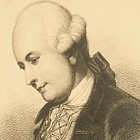 John Cadwalader, a prominent merchant from Philadelphia, commanded the Pennsylvania Associators, a volunteer militia, during the Trenton-Princeton campaign of 1776-1777. Unable to cross the Delaware on the night of December 25, he led his men across the Delaware into New Jersey on the 27th, acting on his own initiative. This unexpected news prompted General Washington to hold an emergency council of war that decided to commit to a second crossing and conduct further campaigning in New Jersey. This led to the Battle of Princeton.
John Cadwalader, a prominent merchant from Philadelphia, commanded the Pennsylvania Associators, a volunteer militia, during the Trenton-Princeton campaign of 1776-1777. Unable to cross the Delaware on the night of December 25, he led his men across the Delaware into New Jersey on the 27th, acting on his own initiative. This unexpected news prompted General Washington to hold an emergency council of war that decided to commit to a second crossing and conduct further campaigning in New Jersey. This led to the Battle of Princeton.
Cadwalader also served at the Battles of Brandywine, Germantown, and Monmouth as a volunteer. He famously refused Washington twice to be a general in the Continental Army. Also, Cadwalader fought a duel with Thomas Conway of Conway Cabal notoriety, shooting him in the mouth. How can you not like this guy?
William Campbell
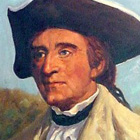 In 1775, William Campbell was one of thirteen signers of the Fincastle Resolutions, the first statement of armed resistance to Great Britain from a colonial assembly. Campbell led Virginia militia during the Battle of King’s Mountain, a rout that destroyed Patrick Ferguson’s Loyalist militia in the South. Campbell also responded to a request for militia aid from Major General Nathanael Greene and brought sixty riflemen to Guilford Courthouse. An article telling more about him has been published in Journal of the American Revolution.
In 1775, William Campbell was one of thirteen signers of the Fincastle Resolutions, the first statement of armed resistance to Great Britain from a colonial assembly. Campbell led Virginia militia during the Battle of King’s Mountain, a rout that destroyed Patrick Ferguson’s Loyalist militia in the South. Campbell also responded to a request for militia aid from Major General Nathanael Greene and brought sixty riflemen to Guilford Courthouse. An article telling more about him has been published in Journal of the American Revolution.
Richard Caswell
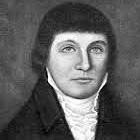 Richard Caswell, a delegate to the First and Second Continental Congress, commanded patriot militia in the field at the Battle of Moore’s Creek Bridge. His battlefield leadership combined with James Moore’s logistical work leading up to the battle led to a stunning victory that crushed Loyalist hopes in North Carolina and prevented the Scottish Loyalist army under Maj. Donald McDonald from mobilizing Loyalists in the coastal areas. This battle, along with the patriot victories at Sullivan’s Island (Charleston, South Carolina) and Great Bridge (near Norfolk, Virginia), kept the South free from British control until late 1778.
Richard Caswell, a delegate to the First and Second Continental Congress, commanded patriot militia in the field at the Battle of Moore’s Creek Bridge. His battlefield leadership combined with James Moore’s logistical work leading up to the battle led to a stunning victory that crushed Loyalist hopes in North Carolina and prevented the Scottish Loyalist army under Maj. Donald McDonald from mobilizing Loyalists in the coastal areas. This battle, along with the patriot victories at Sullivan’s Island (Charleston, South Carolina) and Great Bridge (near Norfolk, Virginia), kept the South free from British control until late 1778.
George Rogers Clark
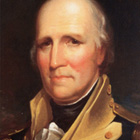 Nicknamed the Conqueror of the Old Northwest, George Rogers Clark led Virginia and Kentucky militia across the Ohio River into Indian territory from 1778 through 1786, capturing British forts and burning Indian villages. Clark is most remembered for his 200 mile winter march to Vincennes where he compelled the British commander, Henry Hamilton, to surrender. Clark’s military exploits gave legitimacy to American land claims across the Appalachian Mountains.
Nicknamed the Conqueror of the Old Northwest, George Rogers Clark led Virginia and Kentucky militia across the Ohio River into Indian territory from 1778 through 1786, capturing British forts and burning Indian villages. Clark is most remembered for his 200 mile winter march to Vincennes where he compelled the British commander, Henry Hamilton, to surrender. Clark’s military exploits gave legitimacy to American land claims across the Appalachian Mountains.
Philemon Dickinson
 Philemon Dickinson rose from a colonel in the Hunterdon County militia in 1775 to major general of all New Jersey militia in June 1777, a post he retained through the remainder of the war. He led militia during the Forage War of January – March 1777, during which time he raided a large British foraging party near Somerset Court House and captured around forty wagons of supplies and several prisoners. Washington wrote to Congress, “General Dickinson’s behaviour reflects the highest honour upon him, for tho’ his troops were raw, he led them thro’ the River, middle deep, and gave the enemy so severe a charge, that although supported by three field pieces, they gave way and left their convoy.” Dickinson commanded New Jersey militia and served effectively with Continental Army Brig. Gen. William Maxwell in the Monmouth Campaign, harassing the British flank during their march across New Jersey.
Philemon Dickinson rose from a colonel in the Hunterdon County militia in 1775 to major general of all New Jersey militia in June 1777, a post he retained through the remainder of the war. He led militia during the Forage War of January – March 1777, during which time he raided a large British foraging party near Somerset Court House and captured around forty wagons of supplies and several prisoners. Washington wrote to Congress, “General Dickinson’s behaviour reflects the highest honour upon him, for tho’ his troops were raw, he led them thro’ the River, middle deep, and gave the enemy so severe a charge, that although supported by three field pieces, they gave way and left their convoy.” Dickinson commanded New Jersey militia and served effectively with Continental Army Brig. Gen. William Maxwell in the Monmouth Campaign, harassing the British flank during their march across New Jersey.
Nicholas Herkimer
 Nicholas Herkimer became a brigadier general in the Tryon County militia in September 1776 and provided leadership against the growing Loyalist and Iroquois threat. Upon hearing of a large British, Tory, and Indian force surrounding Fort Stanwix, he assembled 800 militiamen and 60 Oneida allies at Fort Dayton and marched to its relief. He made the grievous mistake of not using these Oneida warriors to scout his marching column’s approach and was ambushed by British, Loyalists, and Iroquois. His battlefield leadership helped prevent what could have been a massacre. The Battle of Oriskany marked the beginning of a civil war within the Six Nations.
Nicholas Herkimer became a brigadier general in the Tryon County militia in September 1776 and provided leadership against the growing Loyalist and Iroquois threat. Upon hearing of a large British, Tory, and Indian force surrounding Fort Stanwix, he assembled 800 militiamen and 60 Oneida allies at Fort Dayton and marched to its relief. He made the grievous mistake of not using these Oneida warriors to scout his marching column’s approach and was ambushed by British, Loyalists, and Iroquois. His battlefield leadership helped prevent what could have been a massacre. The Battle of Oriskany marked the beginning of a civil war within the Six Nations.
Francis Marion
 Francis Marion, the “Swamp Fox,” challenged British rule in the South Carolina backcountry after the Continental Army’s defeat at Camden in August 1780. His asymmetric warfare stymied British efforts to mobilize Loyalists in the Georgetown District and has since been romanticized by Disney and Mel Gibson. Marion, unlike Thomas Sumter, coordinated effectively in the field with the Continental Army. Together with Light Horse Harry Lee’s Legion, Marion captured Fort Watson on the Santee River and then Fort Motte, forcing the British to evacuate Camden. Marion commanded South Carolina militia as shock troops in advance lines along with Andrew Pickens at the Battle of Eutaw Springs.
Francis Marion, the “Swamp Fox,” challenged British rule in the South Carolina backcountry after the Continental Army’s defeat at Camden in August 1780. His asymmetric warfare stymied British efforts to mobilize Loyalists in the Georgetown District and has since been romanticized by Disney and Mel Gibson. Marion, unlike Thomas Sumter, coordinated effectively in the field with the Continental Army. Together with Light Horse Harry Lee’s Legion, Marion captured Fort Watson on the Santee River and then Fort Motte, forcing the British to evacuate Camden. Marion commanded South Carolina militia as shock troops in advance lines along with Andrew Pickens at the Battle of Eutaw Springs.
Isaac Shelby
 Like George Rogers Clark, Isaac Shelby’s first experience in warfare came during Lord Dunmore’s War. He fought under his father’s command at the Battle of Point Pleasant, the only major battle of that conflict. Shelby, hearing of the capitulation of Charleston in 1780, left the Kentucky frontier for the Carolinas where he commanded jointly with Elijah Clarke at the Battle of Musgrove’s Mill and with William Campbell and John Sevier at King’s Mountain.
Like George Rogers Clark, Isaac Shelby’s first experience in warfare came during Lord Dunmore’s War. He fought under his father’s command at the Battle of Point Pleasant, the only major battle of that conflict. Shelby, hearing of the capitulation of Charleston in 1780, left the Kentucky frontier for the Carolinas where he commanded jointly with Elijah Clarke at the Battle of Musgrove’s Mill and with William Campbell and John Sevier at King’s Mountain.
Thomas Sumter
 Thomas Sumter rallied the American cause after the fall of Charleston and the defeat at Camden in 1780. He took the field, leading South Carolina militia against the British before Maj. Gen. Nathanael Greene arrived to coordinate American resistance and rebuild the Continental Army. Sumter commanded South Carolina militia in many battles, including Hanging Rock, Fishing Creek, Fishdam Ford, and Blackstock’s Plantation. At Blackstock’s Plantation, Sumter dealt Lt. Col. Banastre Tarleton’s British Legion their first defeat. British military occupation of South Carolina was never firmly established given the efforts of partisans like Brig. Gen. Thomas Sumter.
Thomas Sumter rallied the American cause after the fall of Charleston and the defeat at Camden in 1780. He took the field, leading South Carolina militia against the British before Maj. Gen. Nathanael Greene arrived to coordinate American resistance and rebuild the Continental Army. Sumter commanded South Carolina militia in many battles, including Hanging Rock, Fishing Creek, Fishdam Ford, and Blackstock’s Plantation. At Blackstock’s Plantation, Sumter dealt Lt. Col. Banastre Tarleton’s British Legion their first defeat. British military occupation of South Carolina was never firmly established given the efforts of partisans like Brig. Gen. Thomas Sumter.
Joseph Warren
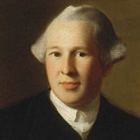 Joseph Warren, a prominent Boston physician, is often overshadowed by figures like Samuel Adams, John Hancock, Paul Revere, and Israel Putnam. Warren, however, made significant political and military contributions towards the cause for American independence. He drafted the Suffolk Resolves, later adopted by the Continental Congress, in which he advocated resistance to the Intolerable Acts. He helped coordinate the rising of the minutemen to resist the British march on Concord and possibly used Margaret Gage, the British commander in chief’s wife, as an informant. He led militiamen in the Battles of Lexington and Concord and volunteered to fight as a private on Breed’s Hill where he tragically died giving his fellow militia time to retreat.
Joseph Warren, a prominent Boston physician, is often overshadowed by figures like Samuel Adams, John Hancock, Paul Revere, and Israel Putnam. Warren, however, made significant political and military contributions towards the cause for American independence. He drafted the Suffolk Resolves, later adopted by the Continental Congress, in which he advocated resistance to the Intolerable Acts. He helped coordinate the rising of the minutemen to resist the British march on Concord and possibly used Margaret Gage, the British commander in chief’s wife, as an informant. He led militiamen in the Battles of Lexington and Concord and volunteered to fight as a private on Breed’s Hill where he tragically died giving his fellow militia time to retreat.
Honorable Mentions: Elijah Clarke, Andrew Pickens, and John Sevier










9 Comments
Thanks Mr. Sobol. Found this article very interesting having just re-read the other day William Welsch’s Top 10 Continental Army Generals.
A great list. I might would have included General James Williams who was killed at Kings Mountain.
A very good list and thought provoking.
There is another category of generals who commanded both militia and Continental Army forces but had their best performances as militia commanders. Two examples are John Stark and Benjamin Lincoln. Stark ably led militia units at Bunker Hill and executed a stunning battle plan at Bennington to thoroughly defeat the invading Hessian units. Stark’s performance as a Continental Army General was less notable.
Masterfully, Lincoln commanded New England militia units in the Saratoga campaign which cut off Burgoyne’s retreat. But as the Continental Army General leading the Southern Department in Charleston, he suffered the largest surrender of Patriot forces during the war. Clearly, their performances as militia commanders far surpassed their Continental Army experiences and provided contributions on par or exceeded those in this article.
Great points Mr. Procknow. For his service at Bunker Hill and Bennington, I had included John Stark on an earlier draft. I agree the impact of his service probably outweighs anyone on my final list. I took him off the list because readers would readily and correctly identify him as a Continental Army officer and perhaps become confused as to his inclusion in a list of militia leaders.
Thanks for pointing out this additional category of Continental Army officers who also commanded militia. I’d add Israel Putnam to the list.
Both Marion and Sumter served in state AND Continental forces.
Mr. Sobol, I really enjoyed seeing your list and was delighted to see several names from the southern campaigns. A couple of the other names were new to me, Philemon Dickinson comes to mind. Thanks for the introduction. I see you are a recent grad from William and Mary. Congratulations, always jealous when I get a chance to visit with people lucky enough to experience a few years at Williamsburg. The recent seminar there was quite a good show but it rained and I did not visit the new black powder exhibit and range. 🙂
Very enjoyable, thank you. Now how about a top ten match ups, British vs Patriot? or David vs Goliath battles with insight on how they were won?
To include T. Sumter into the top ten Militia Commanders and to exclude Andrew Pickens from that group is a miscarriage. It proves that Sumter’s PR campaign still is in effect 200 plus years after his death. He sacrificed his men in need less frontal assaults on well defended positions he barely escaped capture at least twice due to his failure to provide security at his camps. He refused to assist Greene and when in congress lead an effort to stop assistance to Greene’s wife after his death.
Andrew Pickens didn’t create a campaign after the war to pump up his war actions. Pickens was a man of few words but he didn’t shy away from a fight. He was front and center at Cowpens he even took his militia into NC.
Sumter was a militia leader no doubt but not to the quality of Andrew Pickens.
Consider Lt. Col. Frederick von Weissenfels. He commanded the 2nd, 3rd, and 4th New York Levies and participated in every major battle from Quebec, under Benedict Arnold, in 1775, until the New York Legislature’s reduction in force in 1781. He fought at Brooklyn, White Plains, Saratoga, Trenton, Monmouth Courthouse, and Sullivan’s Expedition against the Iroquois to name a few. When he was passed over for promotion to general, George Washington lamented that this brave soldier, who had proven himself in battle, was snubbed.
He and 4th New York distinguished themselves at Monmouth. When Washington rode onto the battlefield to rally the retreating Americans, it was the 4th New York, led by Weissenfels, in a bayonet charge that drove the British from the hedgerow they had just taken. The incident was confirmed by Major General Philip Schuyler.
After the reduction in force in 1781, Weissenfels joined Marius Willet protecting New York’s northern frontier from the British and their Native American allies. He and Willet defeated the British at Sharon Springs and Johnstown.
Weissenfels was a life-long soldier. He served eight years in the Prussian Army, six years in the army of the United Provinces of the Netherland, and in the British Army’s Royal American Rifles throughout the French and Indian War. He fought at the Plains of Abraham, Ticonderoga and Havana.
His personal life was as bad as his soldiering was good. After the Revolution he was constantly in financial trouble. However, in 1787, the New York Legislature thought enough of his military service that they passed a special bond issue to pay off Weissenfels debts.
Unfortunately, he died in New Orleans while serving in a minor role with the police department in 1806. He was 68.